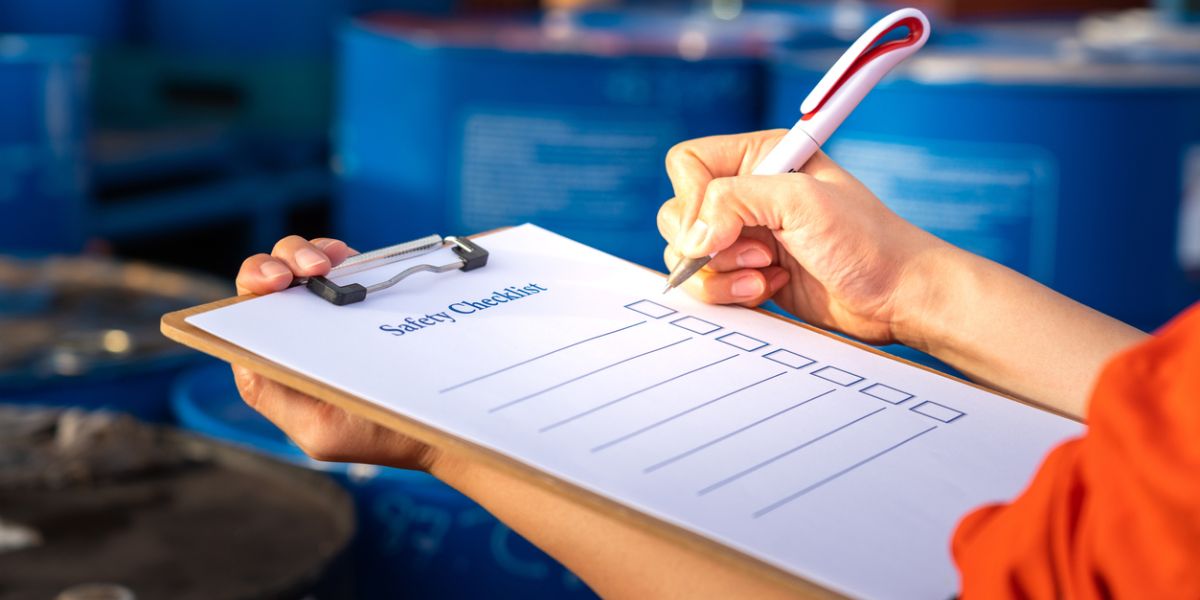Construction and skilled trades are some of the most dangerous industries in which to work. It is critical that every possible precaution be taken to ensure the safety of your team, your customers/clients, the public, and your property. There is an element of legal compliance here to be sure, but first and foremost, safety audits are designed to prevent serious accidents and incidents and keep your job sites as free from hazards as possible.

What Are Safety Audits?
During safety audits, an internal environmental, health, and safety (EHS) manager/ team or a third party evaluates the effectiveness of your safety programs, policies, and processes. They seek to determine if you are in compliance with regulations pertaining to your industry. They also look at how effective employees are in following these procedures.
While there isn’t a single one size fits all checklist, if you will, a safety audit will typically look at issues, such as whether:
- The health and safety program meets all regulatory requirements.
- There is a mechanism by which to track the effectiveness and reliability of safety programs, policies, and processes.
- There are procedures related to hazard identification, assessment, prevention, and control.
- You have clear emergency procedures in place.
- Employees adhere to health and safety-related programs, policies, and processes.
- You have documentation in terms of compliance.
Are safety audits the same as safety inspections? It’s a common question – and a good one. While similar, no, they are not the same. Look at it like this: inspections are more frequent and more “boots-on-the-ground” while audits are more “big picture.” Let us explain: Safety inspections should be conducted with relative frequency so companies can identify and deal with hazards in their workplace as it currently operates.
Safety audits look at the overall effectiveness of your health and safety programs. So, while an inspection may look at a wet floor and say, “This could be a big fall hazard,” an audit says, “How often are the floors being cleaned? What materials are available? Is the flooring itself fundamentally safe and in compliance with industry standards?”
Safety Audits and Remediation
Health and safety audits can uncover areas that require remediation. That is, they identify an issue and develop solutions that will remedy it. For example, should an audit discover the presence of lead paint at a site, they must take steps to remediate it, whether that means covering it or disposing of the affected materials in an environmentally-compliant manner.
The goal of remediation is to improve the level of health and safety at worksites to ensure that employees, customers/clients, and other key stakeholders are safeguarded.
How Often Should You Conduct Safety Audits?
As mentioned, safety audits should be done frequently. You should also train employees – and encourage them – to identify issues in the work environment that could lead to unsafe conditions. If they see something, say something. Right then, right there.
That said, a full-scale, comprehensive safety audit should be conducted annually. Alternatively, you may target different aspects of the business (e.g. different departments) for their own audits, which will be done on a rotating basis throughout the year with one company-wide audit at the end.
Regardless of your particular method, be sure that the process is communicated clearly to employees and that they are documented.
Audits can be a stressful time for teams. Be sure to recognize this and to highlight positive conclusions. Emphasize what they are doing well. When it comes to safety audits and remediation, communicate areas for improvement and what corrective actions need to be taken to prevent issues. (And again, document!) Avoid playing the blame game; instead, focus on proactively moving forward.
Labor for Hire: Making Safety a Priority
The best time to start training around workplace health and safety is… of course… at the beginning. When bringing new people onto your team, ensure that they are properly trained. Labor for Hire specializes in placing qualified candidates with companies, ensuring the right fit. But we also know it’s about more than showing up for work; employees, whether full-time and permanent or temporary, need to understand how to stay safe on the job.
We offer full safety training, including OSHA training in compliance with industry standards, as well as leading risk assessment and advice-based services. Our comprehensive solutions make it easier to implement and maintain robust health and safety programs, policies, and processes.
The Right Fit
Finding the right fit is more than checking off boxes in terms of hard skills. It also encompasses ensuring that the people you bring into your company and onto your worksites understand the importance of safety measures and adhere to standards and regulations.
Their safety is at stake. But so are your company’s budget, assets, and reputation. Make sure you protect all of these important aspects from the get-go. Contact Labor for Hire to learn more.



